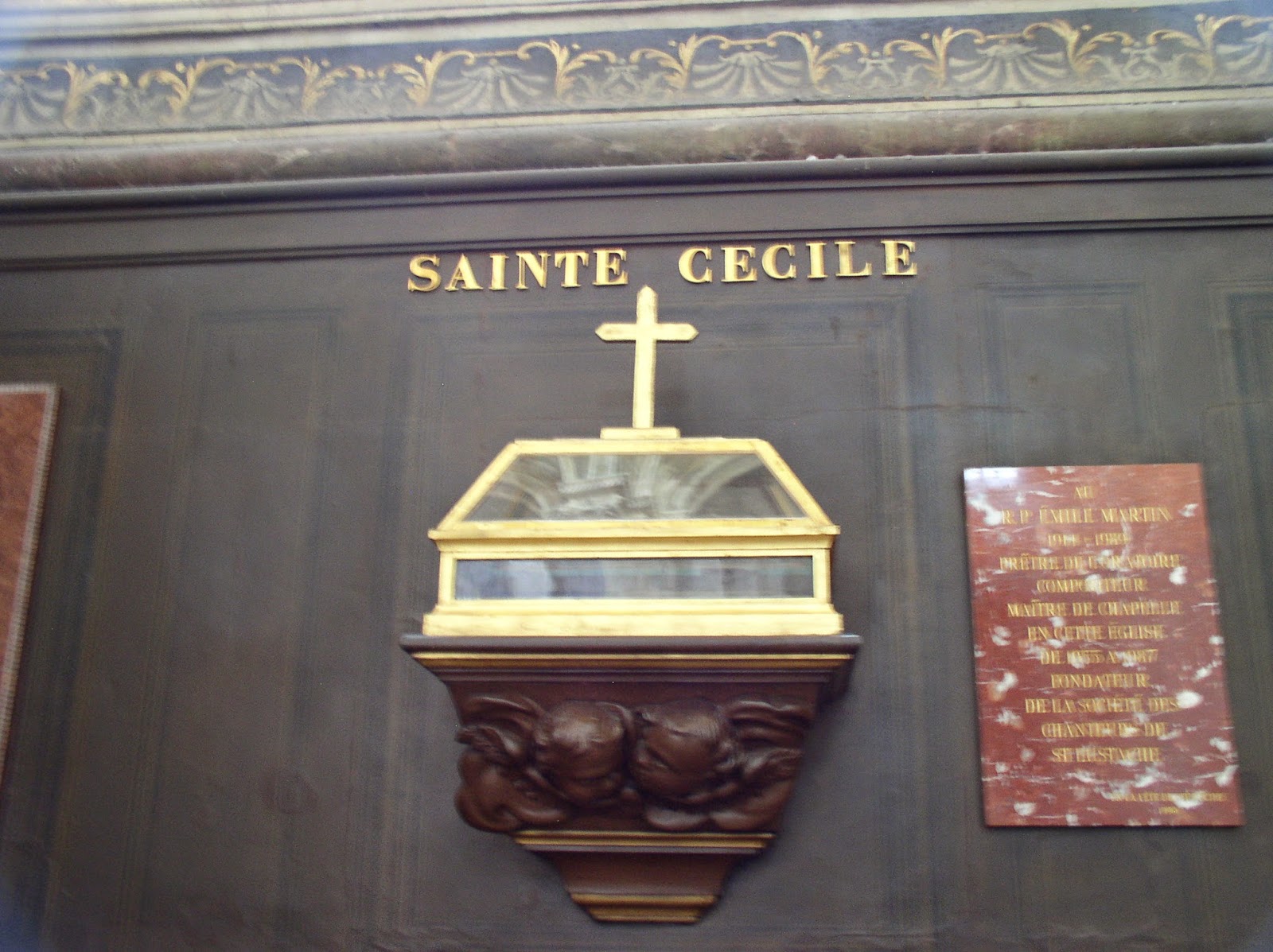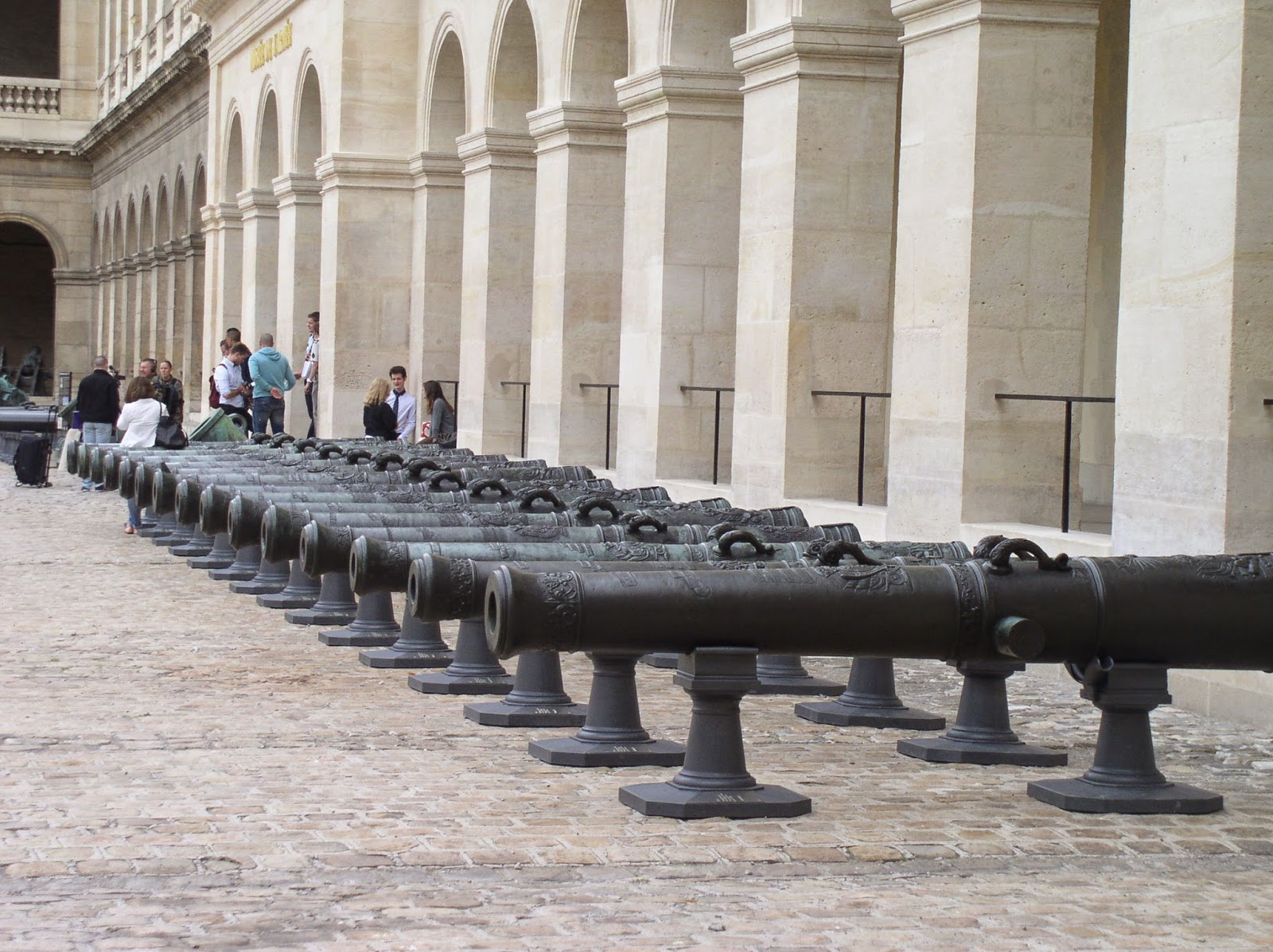Église Saint-Eustache, built upon the foundations of a chapel consecrated to Saint Agnes in the 1200s, took more than a century to build due to lack of funding and religious wars. It is located in the 1er arrondissement and is considered a masterpiece of late Gothic architecture. The name of the church refers to Saint Eustace, formerly Placidus, a Roman general of the second century AD. After a vision of a shining cross between a stag's antlers that he was hunting, he became a Christian and changed his name to Eustatius, meaning "good fortune." He was burned, along with his family, for converting to Christianity.
Construction of the present-day church began in 1532, and it was finally consecrated in 1637. Located close to the Louvre and the Palais Royale, the church was known as the “royal” church from the 17th century up until the Revolution. A young Louis XIV received communion here. Mozart chose the sanctuary as the location for his mother’s funeral. Among those baptised here were Richelieu, Jeanne-Antoinette Poisson (the future Madame de Pompadour) and Moliere, who was also married here in the 17th century. The last rites for Anne of Austria (mother of Louis XIV), Marshall Turenne and Mirabeau (a nobleman and early leader of the French revolution) were pronounced within its walls. Marie de Gournay (1565-1645) is buried here (She was a writer ahead of her time, who anticipated modern feminist concepts in an era when the term “feminist” was unknown.)
Les Halles, presently under construction
Église Saint-Eustache is situated at the entrance to Paris’s ancient marketplace, Les Halles. Emile Zola wrote about Les Halles in his 1873 novel, Le Ventre de Paris (The Belly of Paris), which is set in the busy marketplace of the 19th century. For 800 years, this market was the hub of all food distribution in the city. The main market area sold vegetables during the day, but tons of meat and fish were bought and sold in the middle of the night.
The volume of traffic to and from the market increasingly caused traffic jams in the city center. In the 1960s, it was considered cramped, unsanitary and dangerous. In spite of nostalgia for the old market, it was moved to Rungis in southern Paris. The plan was to replace it with a shopping mall. The 1970s shopping center fell short of expectations among Parisians, so the city embarked on its long-awaited redevelopment plan. Presently there is a large underground shopping mall as well as a major metro and train station, Chatelet-les-Halles, but construction continues aboveground. The scheduled completion is in 2016.
Approaching Saint-Eustache from rue Rambuteau
The garden right across from Saint Eustache was the Jardin des Halles, but after the death of Nelson Mandela in December, 2013, the mayor of Paris, Bertrand Delanoë proposed that the former Jardin des Halles be renamed the “Jardin Nelson Mandela.” The name became official on December 19, 2013.
Façade of Saint-Eustache
Note the sculpture in the lower right hand corner of the photo.
The square on which the sculpture is located is "Place René Cassin," named in honor of the French politician and Nobel Peace Laureate on April 2, 1985.
The sculpture from another angle
The sheer size of the church is awe-inspiring. It is 328 feet (100 meters) long by 141 feet (43 meters) wide by 108 feet (33 meters) high. The height is especially impressive--if a building were that tall, it would be ten stories high.
The organ, which was built in 1854, has 8000 pipes and is said to be the largest pipe organ in France.
The chapel of the Blessed Virgin was consecrated by Pope Pius VII on December 28, 1804, during his visit to Paris on the occasion of the coronation of Napoleon I.
Thomas Couture (1815-1879) painted three frescoes which represent the power of intercession of the Virgin. In the center fresco, the Virgin is adored by angels; to the left is the Virgin, star of sailors; and to the right is the Virgin comforting the afflicted.
The Colbert Family Chapel
The tomb of Jean-Baptiste Colbert by Antoine Coysevox (1640-1720). The sarcophagus is black marble with the kneeling figure of Colbert in white marble Fidelity is the sculpture on the left, and Piety is on the right.
Pope Alexander I establishing the use of holy water in the church by Eugène Bion (1834).
David Roi Prophete, King David of Israel
Le banc d'œuvre of Saint-Eustache dates from 1720.
Le banc d’oeuvre is an ornate bench, comfortably furnished, situated facing the pulpit. It was reserved for church government officials and important parishioners. In the form of a Greek portico, it was sculpted in wood by Pierre Lepautre (1660-1758). At the top of the arch is the figure of Saint Agnes surrounded by angels, “The Triumph of Saint Agnes.”
A close-up of the opposite side of this fascinating sculpture.
Even from the back, the sculpture was eye-catching.
Chapelle de la Crucifixion
This is one of the largest crucifixes I’ve ever seen.
A close-up of the crucifix
The base of the crucifix with votive candles
Chapelle Saint-Louis
The stained glass window depicts the education of Louis IX, future king of France and saint of the Catholic church.
Chapelle des Reliques
The reliquary of Saint Eustache and his companions
Saint Anne
Reliquary of Saint Cécile
Reliquary of Saint Agnes
The martyrdom of Saint Agnes
"As a sheep led away to the slaughter-house, the lamb that stands dumb while it is shorn; no word from him." (Isaiah)
Chapelle Sainte-Madeleine
“The Rapture of Saint Madeleine” by Rutilio Manetti (1571-1636)
“L'Adoration des Magi,” a copy of a painting by Rubens
“The Rapture of Saint Madeleine” by Rutilio Manetti (1571-1636)
“L'Adoration des Magi,” a copy of a painting by Rubens
“Saint Jean-Baptiste” by François Lemoyne (1688-1737)
John the Baptist is represented in a rather casual posture, in the image of the god Bacchus. This lighthearted treatment of a religious subject heralds the rococo art of Natoire and Boucher in the middle of the 18th century.
"The Departure of Fruits and Vegetables from the Heart of Paris”
February 28, 1969
February 28, 1969
In a corner of the church of Saint-Eustache, this sculpture, done in a whimsical, cartoon style by Raymond Mason, pays homage to all the vendors of the Les Halles fruit and vegetable market which was exiled to the suburbs of Paris in 1969. In the words of the artist, “Art should be a means of intercepting thought in its flight, of merging it with matter, giving it weight and body precisely in order to stop time, to hold out against the centuries. I wish that my little procession from Les Halles did not ever have to leave for good.”
Detail of the tableau
Detail of the tableau
Detail of the tableau
If you are asking, "What is this sculpture doing in a church, much less in a church of the loftiness of Saint-Eustache?" I've wondered that myself.
View of Saint-Eustache from the Jardin Nelson Mandela
Syndicat generale de la Bourse de Commerce de Paris
The Bourse, the Paris stock market, is adjacent to the Jardin Nelson Mandela.
To the left of theBourse in the photo is la Colonne Médicis.
To the left of theBourse in the photo is la Colonne Médicis.
FYI: The Colonne Médicis is a 100-feet-tall (31-meter) column that is the only remaining vestige of a royal palace. The palace was built for Catherine de Médicis in 1572, with the column added three years later as an astrological observatory. Her astrologist had a workshop at the top of the tower. When the palace was sold, the tower was sold separately, which may be why the tower alone has survived. The tower has a spiral staircase, but the doorway is now closed to the public.




























































































